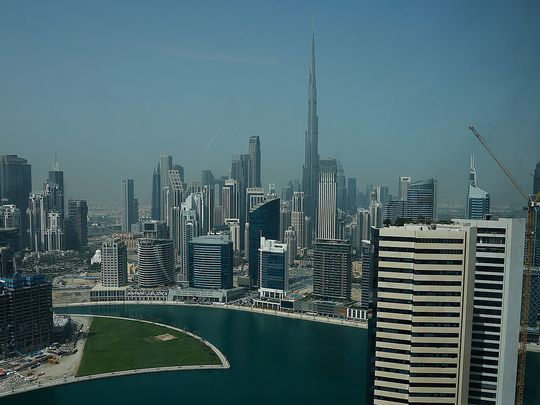
In red-hot real estate markets, it becomes hard to value properties as many factors come into the equation: location, size, layouts, proximity to the sea, renovations, in addition to comparable launches taking place at hyperkinetic speeds.
Typically, during this time, there are a number of buyers who go for older properties, as the gap rises between prices of older and newer builds. Built into this decision is the factor that there are a number of renovations needed for older builds.
To avoid these pitfalls, many end up buying newer properties - hence the concentration on offplan activity and which spurs offplan sales. In both cases, there is the need for mortgage, and even though activity is up, there is the issue of higher monthly payments, which means that the ability to build wealth from current levels starts to recede as prices increasingly get untethered from their ‘replacement values’.
Inflation bites into value creation
Then there is the counterfactual issue of inflation, which when it is running at above 4-5 per cent, housing can be made cheaper without prices having to fall much in absolute terms.
Sellers can keep their prices steady, and inflation gradually eats into it, as what happened in earlier cycles. However, there is the issue of broker commissions that enters the picture here too, where generous incentives of as much as 10-12 per cent are often shared by buyers. And that allows for prices to sell below their offered price levels.
None of this can argue for the higher monthly payments that have to be made by mortgage buyers, which implies that price levels that have risen are a deterrent for prospective buyers.
Historically, it is the luxury end of the market that cracks first, and whilst transactions have slowed, there is the odd eye-popping deal that continues to capture headlines. Even as buyers continue to struggle with their payments in most areas. But that doesn’t mean that the game is over.
Since the Souq al Manakh crash in Kuwait, the cycles of panic and euphoria have become more and more thrilling. Whoever has been trying to minimize the drama in the markets has been doing a poor job of it.
A rush to revive stalled projects
Whilst valuations have nothing to do with how people transact in the short-term, there is the feeling that at base are a set of incentives that people have created for themselves, from reviving distressed projects (Marina 101, Pentominium, Al Saqran, etc.) to renovations (everyone knows that the availability of carpenters has become next to impossible).
There is also the launch of an incredible array of projects with amenities that even today hold the power to astonish. In the middle are generous payment plans, higher mortgage rates, impossibly high commission rates for middlemen that get divvied up with other brokers and buyers. Finally, the ability to resell to the next buyer, merely by the snapping of fingers.
Ready home incentives - do they work?
These incentives, which do not exist in the ready market, are replaced by fractional ownership often as a way to increase property management fees. Buyers get locked into prime properties at value levels that may not require ownership but, equally, will struggle to sell their slice of ownership depending on how the deal is structured in the secondary market.
There is also this phenomenon whereby ready properties in the same areas (newly handed over) can seemingly never catch up to the latest offplan launch prices. The returns that accrue are either being taken up by the unending array of middlemen and/or the investors in these dazzling projects, which are actualized in the form of ‘profit units’ as developers hold back supply.
With all these constraints in place, it seems likely that the demographic change will imply a continued stream of new buyers. It’s just that many of these may not be getting into wealth building machines as they were in the past.
Investors need to remember how many of these euphoric cycles, where the transfer of wealth became asymmetrical, ended. However, for the time being, value, like beauty, may just be in the eye of the beholder.













